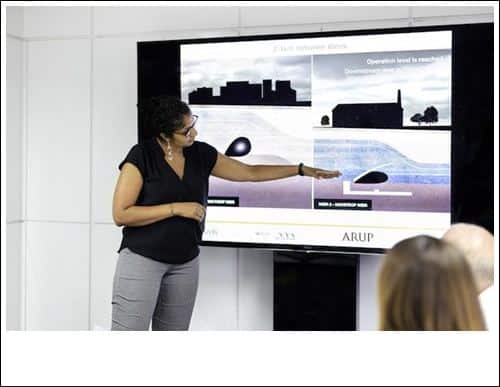Presentations in business meetings, conferences, and classrooms play a significant role in our lives. A well-crafted, engaging, and interactive presentation can make complex ideas more approachable, encourage participation, and leave a lasting impression on the audience. In this article, we’ll discuss the importance of creating captivating presentations and explore strategies for capturing your audience’s attention and maintaining their interest throughout your presentation. Keep reading to learn more.

The first step in creating an engaging and interactive presentation is selecting a visually appealing template and organizing your content cohesively. High-quality and visually attractive templates provide an appealing foundation for the rest of your content. Therefore, selecting an aesthetically pleasing template with color schemes, fonts, and graphical elements that complement your content and message is essential.
In addition, ensure that your content and images are relevant, informative, and visually striking. Strong visuals help communicate information more effectively while also providing a point of interest for your audience. Furthermore, using visuals thoughtfully and minimally to emphasize essential information will help maintain your audience’s attention and prevent cognitive overload.
If you require assistance selecting the best template and organizing your content, you can consider hiring a custom presentation company. Such companies specialize in creating visually engaging presentations tailored to your individual needs, helping you create an impactful and interactive experience for your audience.
Utilizing Interactive Elements
Incorporating interactive elements in your presentations keeps the audience engaged and fosters a collaborative learning environment. Adding interactive features, such as polls, quizzes, and audience Q&As, encourages active participation and allows the audience to have a say in the discussion. This interactive approach helps keep the energy levels high and makes for a more enjoyable and memorable experience for all involved.
Furthermore, integrating interactive activities, such as group brainstorming sessions, can create opportunities for networking, generating new ideas, and receiving real-time feedback on your message. These activities promote audience participation and help attendees retain information by ensuring they remain actively stimulated throughout the presentation.
Lastly, incorporating multimedia components such as videos, animations, and sound effects can also help boost audience engagement. These elements help to vary the pace of your presentation, breaking up solid blocks of information while maintaining the overall flow and structure of your talk.
Employing Storytelling Techniques
Storytelling is a powerful tool that can be employed to capture your audience’s attention and evoke emotional responses. Storytelling techniques, such as creating a compelling narrative, exhibiting vulnerability, and connecting with the audience through shared experiences, can make your presentation more engaging and emotionally resonant.
Ensure that the story you decide to share is relevant to the theme or message of your presentation and provides valuable insights into the topic under discussion. By presenting a relatable and thought-provoking story, you can invite your audience to explore new perspectives, collaborate on problem-solving, and spark meaningful conversations.
Communication skills hold immense importance in all aspects of life. It’s no wonder that many leaders and business owners actively seek to enhance their speaking abilities through courses like collaborating with business storytelling consultants and participating in public speaking workshop. The impact of effective communication cannot be overstated.
Moreover, keep your audience in mind while crafting your story. Using language, tone, and examples that resonate with their interests and experiences will help foster a stronger connection and participation within the presentation.
Encouraging Active Collaboration

Active collaboration is essential for fostering audience engagement and participation throughout the presentation. You can ensure a more inclusive and cooperative environment by encouraging group interactions and providing time for questions. Be open to feedback and questions by maintaining a receptive and approachable demeanor, promoting a dialogue between the audience and the presenter.
Create opportunities within your presentation for group collaboration by incorporating team-based activities such as role-play exercises, brainstorming sessions, or group discussions. Encouraging real-time project collaboration can help develop teamwork skills, enhance communication, and promote collective problem-solving among your audience.
Utilizing digital tools, such as web-based collaborative platforms, can also help facilitate active collaboration among audience members. These tools allow participants to contribute, edit, and share ideas in real-time, streamlining discussions and fostering a more productive interaction among participants.
Creating an engaging and interactive presentation involves various strategies, such as selecting visually appealing templates, incorporating interactive elements, employing storytelling techniques, and encouraging active collaboration. These approaches can help capture the audience’s attention, maintain their interest, and create memorable and impactful presentations that invoke substantive dialogue, foster understanding, and promote cooperation.
Leave a Reply
You must be logged in to post a comment.